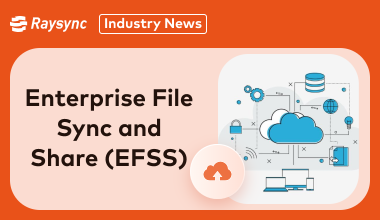Filter News
Industry news
![How to Share Heavy Video Files [3 Free/Paid Methods]](http://images.ctfassets.net/iz0mtfla8bmk/2c5mZZ7wkFTjsN5cdFV1Q8/4776233192a549a825220ccf7e6f056f/how-to-share-heavy-video-files.png)
Industry news
June 21, 2024Explore 3 easy and quick methods to learn how to send heavy video files in a quick and safe manner.

Industry news
June 14, 2024Discover the latest updates on enterprise file transfer software, including managed file transfer, FTP solutions, high-speed file transfer, and cloud-based options. Explore features, benefits, and top recommendations.

Industry news
June 14, 2024Learn all about enterprise file sync and share EFSS solutions and discover the top EFSS options, their features, pricing, and user feedback to choose the best fit for your enterprise needs.

Industry news
June 13, 2024Discover the top 5 enterprise managed file transfer solutions. Compare features, pricing, and user reviews to find the best fit for your business needs.

Industry news
June 13, 2024Discover the top 5 cost-effective alternatives to Aspera for enterprise file transfers.

Industry news
June 5, 2024Learn about the features, pricing, and capabilities of Aspera file transfer in 2024.

Industry news
June 5, 2024Are you tired of using FTP? So, are we since there has been no security of data transfers? That’s why, there have been many FTP Alternatives in this year and they work better than ever.
![Best 3 Massive File Transfers [from 1GB to 100TB]](http://images.ctfassets.net/iz0mtfla8bmk/3A84sM4E1xrOD65h1ikuOv/f46a742aa9f1eaf13b5800360757d54c/massive-file-transfer.png)
Industry news
June 5, 2024To send big files was never an easy task. Thanks to modern technology, now it's achievable and easier than it ever was. Let’s see how these massive file transfers have revolutionized the world of file sharing.

Industry news
May 29, 2024The top 6 enterprise file sharing solution of 2024, are recommended to enhance the data security and collaboration capabilities of your enterprise. Explore these options to find the best fit for your business.

